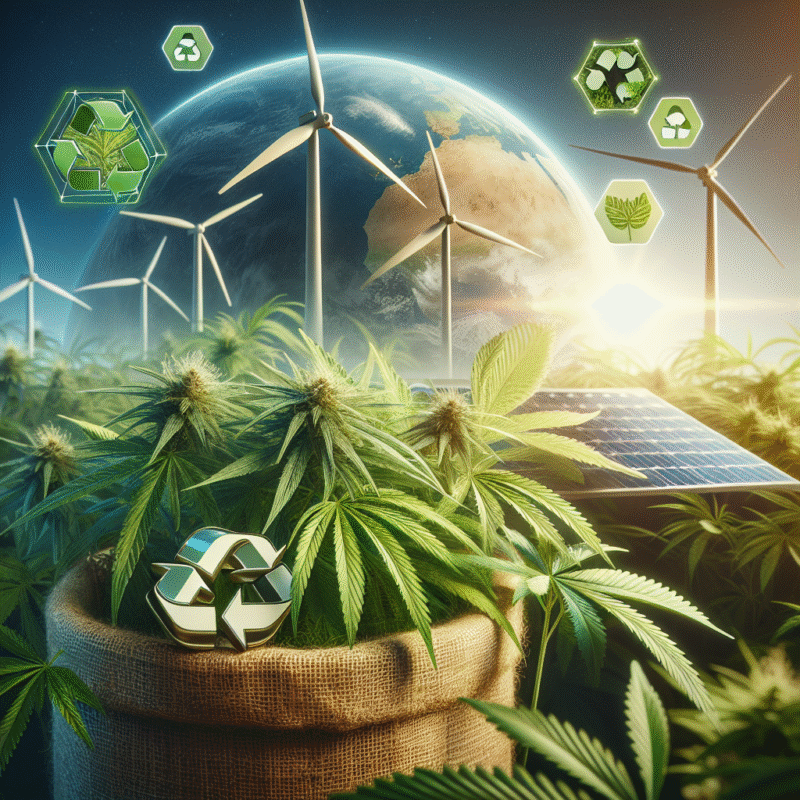Hemp and Sustainability: The Eco-Friendly Solution We’ve Been Waiting For
As the world grapples with the pressing issues of climate change, pollution, and resource depletion, a versatile plant is emerging as a beacon of hope: hemp. This age-old crop, often overshadowed by its more controversial cousin, marijuana, has been recognized for its myriad applications and sustainable attributes. As industries seek greener alternatives, hemp presents itself as a promising solution to some of the planet’s most pressing environmental issues.
The Versatility of Hemp
Hemp, a variety of the Cannabis sativa plant, has been cultivated for thousands of years for its fibers, seeds, and oils. Unlike its THC-laden counterpart, hemp contains negligible amounts of psychoactive compounds, making it legal to grow in many parts of the world. Its versatility is astonishing, with applications ranging from textiles and construction materials to biodegradable plastics and healing health products.
1. Textiles and Clothing
Hemp fibers are renowned for their strength and durability. With a natural resistance to mold, UV light, and pests, hemp clothing not only lasts longer than conventional materials like cotton but also requires fewer pesticides and water to grow. In a time when the fashion industry is one of the most polluting in the world, hemp offers a remedy—from sustainable fashion lines to eco-friendly activewear.
2. Construction Materials
In construction, hemp can be transformed into materials like hempcrete, which is a biocomposite made from hemp hurds and lime. Hempcrete is lightweight, energy-efficient, and carbon-negative, meaning it sequesters more carbon dioxide than is emitted during its production. As the construction industry seeks to reduce its carbon footprint, hemp could redefine sustainable building practices.
3. Biodegradable Plastics
Traditional plastic is derived from fossil fuels, contributing immensely to global pollution and environmental degradation. Hemp can be converted into bioplastic, offering a renewable alternative that decomposes more easily and does not contribute to long-term pollution. This transition is crucial as the world strives to reduce plastic waste and find sustainable substitutes.
4. Biofuels
Hemp seeds and stalks can also be used to create biofuels, providing a clean energy source. The cultivation of hemp for biofuel can significantly lower greenhouse gas emissions compared to fossil fuels, presenting a dual benefit: renewable energy and reduced environmental impact. Additionally, hemp can be grown on marginal land, making it an efficient crop that does not compete with food resources.
Environmental Benefits
Hemp cultivation itself is notably sustainable. It requires minimal pesticide and herbicide use, can thrive in a variety of climates, and actually improves soil health. Its deep root system helps prevent soil erosion and can even assist in phytoremediation—absorbing toxins from contaminated soil. The rapid growth rate of hemp means it can absorb carbon dioxide quicker than many other plants, making it an excellent tool for carbon sequestration.
1. Water Efficiency
Unlike cotton, which is notoriously water-intensive, hemp requires significantly less water. This is a critical factor as regions worldwide face water shortages. Growing hemp can alleviate pressure on freshwater resources, making it a more sustainable choice.
2. Biodiversity and Soil Health
Incorporating hemp into crop rotations can help improve soil health and promote biodiversity. Its deep roots and extensive foliage provide habitats for beneficial insects and can act as a cover crop, improving soil structure and fertility.
The Future of Hemp in a Sustainable World
Despite its benefits, the growth of hemp as a sustainable solution is hindered by outdated regulations and societal misconceptions. As awareness of hemp’s potential grows, so too does the push for legislative changes that can facilitate its cultivation and use.
In recent years, governments around the world, particularly in North America and Europe, have begun to embrace hemp farming, understanding its potential to create jobs and stimulate local economies while fostering sustainability.
Consumer Demand and Industry Innovation
As consumers become more eco-conscious, the market for hemp products is expanding. Businesses across various sectors, from automotive to fashion, are recognizing the benefits of integrating hemp into their products. This shift towards sustainable practices is not just a trend but a necessity in combating climate change.
Education and Advocacy
To fully realize hemp’s potential, education is key. By informing producers, consumers, and legislators about the benefits of hemp, society can shift towards a more sustainable future. Advocacy also plays a crucial role in pushing for reforms that support hemp farming and remove barriers to its broader acceptance.
Conclusion
Hemp stands as a pillar of sustainability, offering a solution to myriad ecological challenges we face today. As we navigate the complexities of climate change and environmental degradation, embracing hemp and its vast applications could lead us toward a greener, healthier planet. With continued education and advocacy, the eco-friendly solution we’ve been waiting for is, quite literally, right at our fingertips. It’s time to plant the seeds of change and let hemp grow into its rightful place in a sustainable future.

